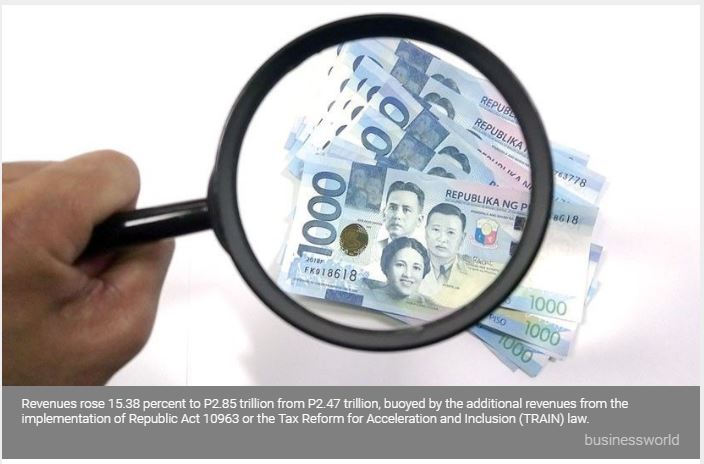Moody’s: Philippines fiscal metrics stable despite breaching deficit target
MANILA, Philippines — The underlying fiscal metrics of the Philippines remain stable even after the national government overshot its budget deficit ceiling last year, according to Moody’s Investors Service.
“Although wider budget shortfalls typically reflect a credit-negative deterioration in other fiscal metrics, measures of the Philippine government’s indebtedness and debt affordability have remained stable or continued to improve,” Moody’s vice president and senior credit officer Christian de Guzman said.
The country’s budget shortfall widened by nearly 60 percent to P558.26 billion or 3.2 percent of gross domestic product (GDP) last year from P350.6 billion or 2.2 percent of GDP in 2017 as government expenditures surpassed revenues.
Revenues rose 15.38 percent to P2.85 trillion from P2.47 trillion, buoyed by the additional revenues from the implementation of Republic Act 10963 or the Tax Reform for Acceleration and Inclusion (TRAIN) law.
On the other hand, expenditures jumped by 21 percent to P3.41 trillion from P2.82 trillion amid massive infrastructure spending under the Duterte administration’s Build Build Build program.
The wider deficit in 2018 resulted from increased revenue and expenditures, both of which benefited from reform. The new tax law contributed to increased tax revenue of 14.7 percent of GDP, up 0.5 percentage point from 2017, driven primarily by improved tax administration, higher remittances from government-owned and controlled corporations, and stronger gaming income.
“We expect a continued increase in revenue generation this year because the TRAIN law codified gradual increases in excise tax rates that took effect at the beginning of this year,” De Guzman said.
On the other hand, he said government spending last year was 0.2 percentage point higher than originally programmed and more than offset the rise in revenue.
De Guzman said higher spending reflects a more expansionary fiscal policy given higher outlays for social spending as well as a focus on ramping up public infrastructure investment to more than seven percent of GDP by 2022, from as low as 1.6 percent in 2011.
Notwithstanding the demonstrated effectiveness of its spending reforms, he said the government may be challenged to fully execute the programmed spending budget of 19.3 percent of GDP for this year, partly because of the delay in the passage of the budget law.
For 2019, De Guzman said the debt watcher expects the fiscal deficit to slightly narrow this year in light of the government’s outlooks for revenue and expenditure.
According to De Guzman, the fiscal deficit did not widen so much that it increased government debt, which declined to 41.9 percent of GDP in 2018 from 42.1 percent in 2017.
The debt-to-GDP ratio, he said also remained stable despite the five percent depreciation of the peso against the US dollar in 2018.
De Guzman said improved revenue more than offset higher coupon rates on newly issued domestic debt, primarily reflecting higher inflation as well as increased foreign debt servicing amid the weakness of the peso against the dollar.
“Because of a stable debt burden, stabilizing market interest rates and improving revenue, we expect the Philippines’ debt affordability to continue to converge toward the Baa2 peer median,” Moody’s said.
Source: https://www.philstar.com/business/2019/03/01/1897593/moodys-philippines-fiscal-metrics-stable-despite-breaching-deficit-target#FMVIpI6mVa0X775J.99


 English
English




